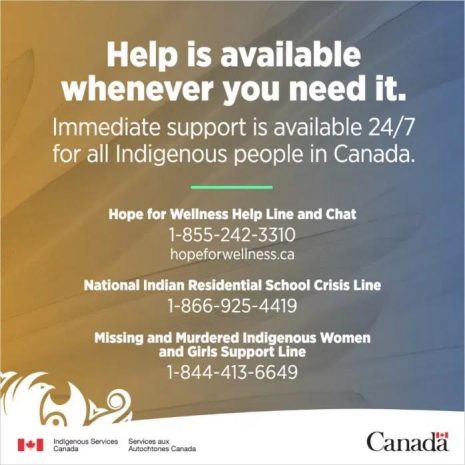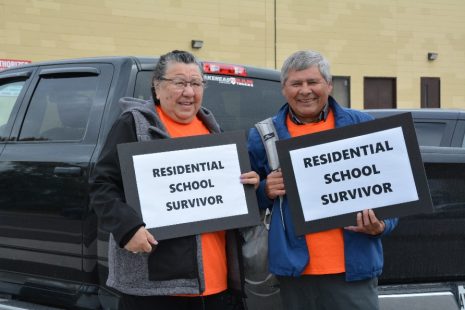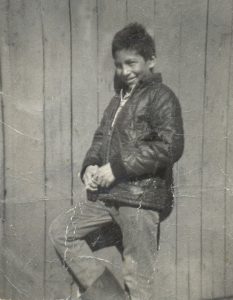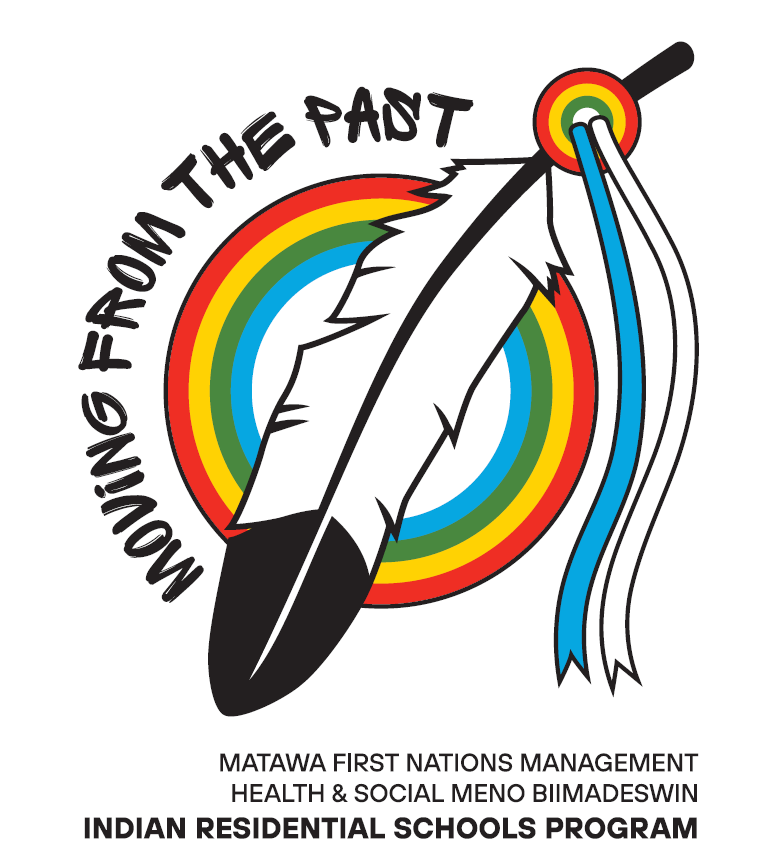Warning
Some information detailed on this website may stir up unpleasant feelings or thoughts.
We encourage you to not hold on to them and take time to care for your mental and emotional well being.

Indian Residential Schools
The Indian residential school system represents one of the darkest moments in our shared history on Turtle Island. This network of schools was established by the Canadian government starting in 1831 and administered over the next 165 years by Roman Catholic, Anglican, United and Methodist and other Christian denominations.
The Indian residential school system sought to ‘kill the Indian in the child’ and assimilate First Nation children by forcibly removing them from their families, communities, and cultures. Students faced harsh discipline and physical, emotional and sexual abuse at the schools. Thousands did not make it home, dying of disease, starvation and abuse, or after trying to escape to make the long journey back to their families.
Google Maps IRS Interactive Map
National Centre for Truth and Reconciliation IRS Interactive Map

Dr. Peter H. Bryce
In the early 1900’s, Dr. Peter Henderson Bryce, a medical inspector for the Department of Indian Affairs from Mount Pleasant Ontario (an expert on tuberculosis), wrote a report documenting the inhumane and unsanitary conditions of residential schools and made recommendations for addressing them. He called his report a: The Story of a National Crime Being an Appeal for Justice to the Indians of Canada. It can be found here.
He stood up for First Nations children when it was a hard thing to do and was criticized. Today, Indigenous Peoples consider him a hero.
Annual Truth and Reconciliation Week
September was referred to as ‘the crying month’ by many, as it was the month that children were taken from their families and communities.
In June 2021, the federal government announced the National Day for Truth and Reconciliation, to be recognized on September 30 each year. This day fulfills the Truth and Reconciliation Commission’s Call-to-Action #80 and serves as a day of remembrance, reflection, action, and learning. Since 2013, September 30 has been known as Orange Shirt Day, a day to recognize the tragic history and legacy of residential schools through the story of Phyllis (Jack) Webstad.
There is absolutely no disputing that the residential schools were one of the darkest periods in Canadian history, and that the legacy of the schools continues today.
Now that more and more of the world are beginning to know the truth about the little ones who never came home and what Survivors endured (and continue to endure today), it is imperative that we commit to change and to individual, organization, and corporate acts of reconciliation. The residential schools were one of the darkest periods in Canadian history, and that the legacy of the schools continues today.
We are asking, what will you do in honour of Survivors and the children? Years from now, what will your legacy be?
Check out these resources for more information and ways to make a difference:
One of the more known former Indian residential schools students is from a First Nation in the Matawa region, his name was Chanie Wenjack. He was an Anishinaabe boy born in Ogoki Post on the Marten Falls Reserve on January 19, 1954. He was 9 years old (in 1963) when he was sent to Cecielia Jeffrey Indian Residential School in Kenora, Ontario. More on him can be found: here.

Children from Matawa attended Indian residential schools from all over the country. In Ontario, the ones that were part of the Settlement Agreement were:
- Bishop Horden Hall (Moose Fort, Moose Factory), Moose Island, Ontario
- Cecilia Jeffrey (Kenora, Shoal Lake), Kenora, Ontario
- Chapleau (St. John’s), Chapleau, Ontario
- Cristal Lake High School (September 1, 1976 to June 30, 1986)
- Fort Frances (St. Margaret’s), Fort Frances, Ontario
- Fort William (St. Joseph’s), Fort William, Ontario
- McIntosh, McIntosh, Ontario
- Mohawk Institute, Brantford, Ontario
- Mount Elgin (Muncey, St. Thomas), Munceytown, Ontario
- Pelican Lake (Pelican Falls), Sioux Lookout, Ontario
- Poplar Hill, Poplar Hill, Ontario
- St. Anne’s (Fort Albany), Fort Albany, Ontario
- St. Mary’s (Kenora, St. Anthony’s), Kenora, Ontario
- Shingwauk (Wawanosh Home), Sault Ste. Marie, Ontario
- Spanish Boys School (Charles Garnier, St. Joseph’s, formerly Wikwemikong Industrial), Spanish, Ontario
- Spanish Girls School (St. Joseph’s, St. Peter’s, St. Anne’s formerly Wikwemikong Industrial), Spanish, Ontario
- Stirland Lake High School/Wahbon Bay Academy (September 1, 1971 to June 30, 1991)
- Wawanosh Home (January 1, 1879 to August 5, 1892), Sault Ste. Marie, Ontario
We honour and remember the children taken and the parents left behind. We recognize that every child matters. We mourn the lives lost.


In mid-2024, Matawa First Nations Management hopes to commence an Indian Residential Schools/Indian Day Schools Survivors Healing Program. This will involve the Matawa Health & Social Meno Biimadeswin Department overseeing a Coordinator position as follows: here.
More information to follow.
The Truth and Reconciliation Commission of Canada (TRC) was created through a legal settlement between Residential Schools Survivors, the Assembly of First Nations, Inuit representatives and the parties responsible for creation and operation of the schools: the federal government and the church bodies. The TRC documented the truth of Survivors, their families, communities, and anyone personally affected by the residential school experience: https://nctr.ca/records/reports/.
The TRC’s mandate was to inform all Canadians about what happened in residential schools. The TRC documented the truth of Survivors, their families, communities and anyone personally affected by the residential school experience. This included First Nations, Inuit and Métis former residential school students, their families, communities, the churches, former school employees, government officials and other Canadians.
The TRC concluded its mandate in 2015 and transferred its records to the safekeeping of National Centre for Truth and Reconciliation (NCTR).
In June 2022, Kimberly Murray was appointed as the Independent Special Interlocutor for a two-year term by the Minister of Justice and Attorney General of Canada. The Independent Special Interlocutor is to function independently and impartially, in a non-partisan and transparent manner, and to take part in conversations with Survivors, Indigenous families, and communities who are leading the Sacred work of recovering the missing children and unmarked burials. The Mandate involves speaking directly with those leading search and recovery work and with governments, churches and other individuals and organizations to help identify and remove existing barriers.
The Office of the Independent Special Interlocutor was established to support the work of the Special Interlocutor over her two-year Mandate. It assists Survivors and communities in various ways, including connecting them to funding programs, technical experts, and record holders.
See more at this website: https://osi-bis.ca/about/

